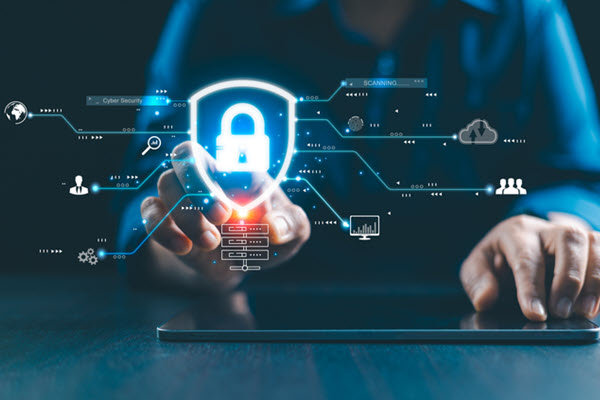Why Security and Privacy Matter
Security and privacy are not just best practices but legal requirements when handling customer data. Regulations like the General Data Protection Regulation (GDPR) in the EU, the California Consumer Privacy Act (CCPA) in California, and other global privacy laws mandate that businesses protect the privacy of individuals and ensure their data is stored and processed securely.
Failure to comply with these regulations can result in hefty fines, legal consequences, and damage to your reputation. On top of that, data breaches can undermine customer trust and loyalty.
Best Practices for Security and Privacy in Experience Cloud
Here are some best practices that businesses should follow to protect customer data in Salesforce Experience Cloud:
1. Use Strong Authentication Methods
One of the first lines of defense in protecting sensitive data is authentication. You must ensure that only authorized users can access the Experience Cloud portals.
- Multi-Factor Authentication (MFA): MFA adds an extra layer of security by requiring users to verify their identity using more than just a password. This could include a one-time passcode sent to their mobile device, biometric scans, or security questions.
- Single Sign-On (SSO): Implementing SSO allows users to log in once and access multiple systems without repeatedly entering their credentials. This reduces the chances of credentials being stolen or misused.
- User Roles and Permissions: Assign clear roles and permissions to ensure that only the right people can access sensitive data. For example, a customer may only need access to their account information, while a support agent may require access to a broader data set.
2. Data Encryption
Encryption ensures that customer data is unreadable to unauthorized individuals, even if it is intercepted during transmission or if someone gains unauthorized access to your systems.
- Encryption at Rest: This protects data stored on Salesforce servers. Experience Cloud automatically encrypts sensitive data at rest, so your data is secure even if someone gains access to the database.
- Encryption in Transit: Ensure that data is encrypted during transmission (for example, when a customer submits information through your portal). Use secure protocols like HTTPS and TLS to protect the data as it travels across the internet.
3. Implement Secure Data Sharing
Salesforce Experience Cloud often involves collaboration between different users, such as customers, partners, and employees. However, not all users should have access to all data. Proper data-sharing rules help ensure that users only access the data they need to perform their tasks.
- Sharing Settings: Customize sharing settings to define who can see specific records. For example, a customer should only see their own support cases and not those of others.
- Record-Level Security: Use Salesforce’s built-in record-level security features like profiles and permission sets to control what data users can access and edit.
- Public Link Restrictions: Be cautious when sharing public links to Experience Cloud resources. Use these links sparingly and apply restrictions where possible, especially when sensitive data is involved.
4. Compliance with Privacy Regulations
Ensuring compliance with data privacy laws is essential not just for protecting customer data but also to avoid legal risks. Salesforce provides tools that can help businesses comply with privacy regulations.
- GDPR Compliance: Salesforce has features designed to help businesses comply with GDPR requirements, such as the ability to request and delete personal data upon customer request.
- Data Retention Policies: Create policies for retaining and deleting customer data following legal requirements. For instance, you should not store personal data longer than necessary for business operations or legal reasons.
- Right to Be Forgotten: Under GDPR, customers can request that their personal data be deleted. Ensure that your Experience Cloud implementation includes features that allow for easy removal of customer data when requested.
5. Regular Audits and Monitoring
Continuous monitoring of your Salesforce Experience Cloud environment is crucial for detecting security vulnerabilities or breaches. Regular audits can help you identify potential risks before they escalate.
- Login History Tracking: Monitor login attempts to detect suspicious activity, such as failed login attempts or logins from unusual locations.
- Audit Trails: Salesforce’s audit trail feature tracks changes to your system, helping you monitor who is accessing what data and when. Review these logs regularly to identify irregularities.
- Security Health Checks: Use Salesforce’s built-in Health Check tool to evaluate your system’s security settings and ensure you follow the best practices.
6. Educate and Train Your Team
Security isn’t just about technology; it’s also about the people who use it. Educate your employees and users about security best practices.
- Phishing Awareness: Teach your team to recognize phishing emails and avoid clicking on suspicious links or downloading unverified attachments.
- Password Best Practices: Encourage strong, unique passwords and the use of password managers to store credentials securely.
- Security Training: Regularly conduct security training sessions for all stakeholders, including partners, to ensure they understand the importance of data protection.
7. Backup and Disaster Recovery Plan
Despite all the precautions, data loss can still occur. Implement a robust backup and disaster recovery plan to quickly recover data during an attack or system failure.
- Regular Backups: Ensure all critical data is backed up regularly, and store backups in secure locations.
- Disaster Recovery Procedures: Develop and test a disaster recovery plan to ensure that you can restore your systems and data with minimal downtime if a breach or other incident occurs.
Visit the articles below to learn more about Salesforce Experience Cloud:
- Best Practices for Analytics and Reporting
- Personalization to Boost Customer Engagement
- Salesforce Documentation: Experience Cloud
Source: Read MoreÂ



